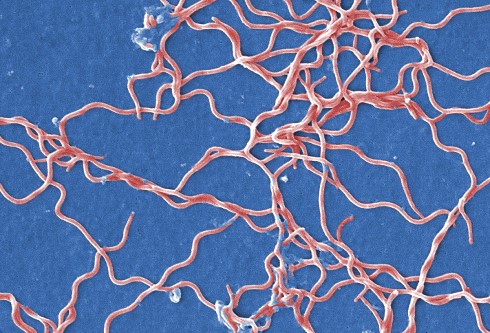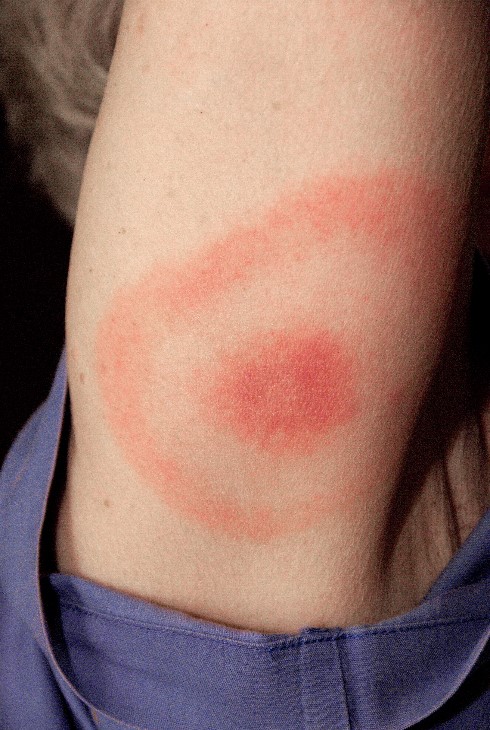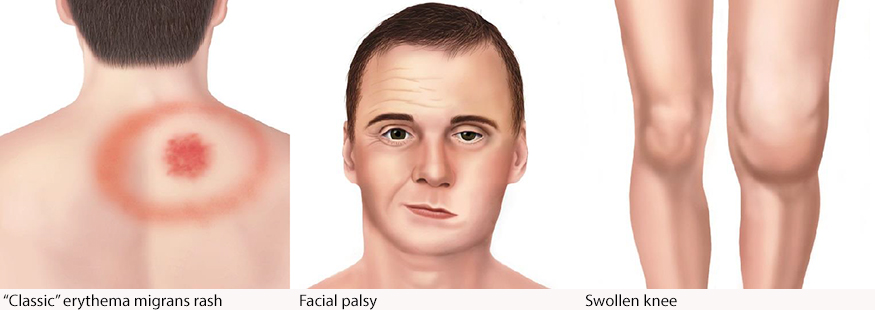Lyme disease is an infection caused by the bacterium Borrelia burgdorferi, which is transmitted in Indiana by the bite of an infected blacklegged tick (Ixodes scapularis). Lyme disease is the most commonly reported tick-borne disease in Indiana and in the United States. Typical symptoms include fever, headache, fatigue, and a skin rash with a characteristic “bulls-eye” appearance. If left untreated, infection can spread to joints, the heart, and the nervous system.

Borrelia burgdorferi. Photo: Janice Haney Carr, Centers for Disease Control and Prevention.
- Transmission
The Lyme disease bacterium is transmitted in Indiana by the blacklegged tick (Ixodes scapularis). In most cases, an infected tick must be attached to the body for at least 36–48 hours before the bacterium can be transmitted. Most humans are infected through the bites of immature ticks called nymphs, which are extremely small (less than 2 mm) and difficult to see. In Indiana, nymphs are most active during spring and summer. Adult ticks, which are most active during the late summer and fall, can also transmit Lyme disease bacteria.
- Signs and Symptoms
- Diagnosis
- Treatment
- Prevention
- Maps and Statistics
- Resources
Page last reviewed/updated: January 2025


